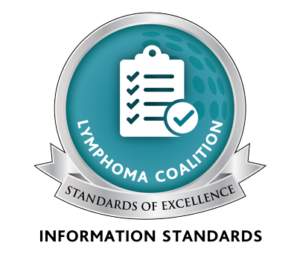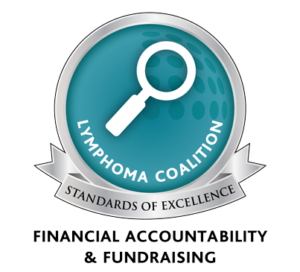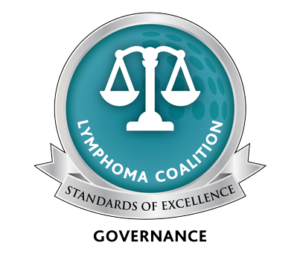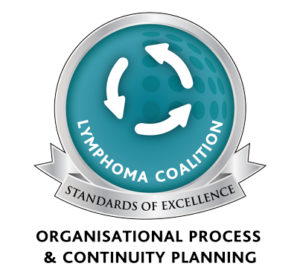Being diagnosed with a life threatening disease is perhaps one of the most stressful experiences a person can endure. In the case of cancer, the word itself is heavy with negativity and social stigma.
By: Greg Dafoe
Being diagnosed with a life threatening disease is perhaps one of the most stressful experiences a person can endure. In the case of cancer, the word itself is heavy with negativity and social stigma. It is enough to overwhelm anyone. When I was first diagnosed, I would begin to tremble just at the thought of “Googling” the word lymphoma. The fear was intense. All I could think of was that I was about to find out just how quickly I was going to die.
After a few weeks I overcame my fear and joined an online support group. Somehow, getting information from others who were experiencing the same thing was less stressful than reading a lot of impersonal medical literature. As time went on and I started to feel comfortable in understanding my diagnosis, I began reading as much medical literature as possible to learn all I could about my disease and how best to survive it.
One of the most important lessons I learned through my experience is the significance of knowledge to patients or caregivers. They should learn as much about lymphoma as possible, to ensure they have the best possible outcome. Unlike many other cancers, lymphoma is an extremely complex disease. The current WHO classification system recognizes approximately 61 official types of lymphoma, with another 30 or more subtypes being considered as future additions to the classification system. It is incredible that nearly 100 different types of the same cancer can exist and the treatments available are just as varied.
With so many types of lymphoma and nearly as many treatments available, it’s not difficult to see the importance of learning about your own type of lymphoma. About 70 per cent of all cases are comprised of the most common types of lymphoma. The remaining cases are quite rare. Although treatment options are often the same, some types of lymphoma require very unique approaches. Only through learning about your type of lymphoma can you ensure that you are receiving the best care possible. The patient must be his or her own best advocate.
Fortunately all those types of lymphoma can be broadly grouped into two categories.
- Aggressive: These types grow quickly and are often curable. Treatments are somewhat more standardized.
- Indolent or slow growing: These types are usually not curable, but have good long-term prognosis. Because the goal is to keep the disease at bay and help the patient live a normal life span, these types have far more options for treatment.
Once you have learned which category you fall into, you can better focus your efforts on learning more about your specific type of lymphoma. Though this can seem a daunting task, it becomes easier as you will have eliminated research that does not apply.
After establishing your type of lymphoma and the common treatment types, it can be tempting to place your care in the hands of your doctor and let their expertise guide your therapy. This is partly true. If you have chosen an experienced lymphoma haematologist/oncologist they will certainly provide you with expert care. Since most types of lymphoma do not have a single standard of care, you may find that doctors’ opinions are diverse. Three different doctors may have three different ideas for treatment. Though each one would be a perfectly valid choice, what is missing is your own knowledge and wishes. If you have done your research you will be familiar with the available choices for treatment. You will have weighed the merits and risks of each option and you will have asked your doctor the right questions. You can then choose which treatment path best fits your needs.
Your choice of treatment can depend largely on your goals. Some patient goals can include:
- Fighting towards a cure
- Trying to maintain quality of life
- Maintaining length of remission
- Avoiding time off work for treatment
- Avoiding harsh side effects that conflict with any existing medical issues
- Putting off therapy as long as possible in the hope something new becomes available
- Avoiding financial hardship
Though there is no single right choice for everyone, you will be better able to make the right choices if you continue to learn all that you can and make informed choices.
The need to remain knowledgeable does not stop when your therapy stops. While many of the aggressive lymphomas are curable, not every patient obtains a cure. It is important to know what treatments are available to deal with relapse. Though indolent lymphomas are usually not curable and a relapse is almost inevitable, there is a broad range of treatment options available. Patients and caregivers must learn about all of their options so they are prepared to choose the one that is best suited for them when the time comes.
New treatments are coming along every day. In the 15 years since my diagnosis in 1998, there have been at least six new cutting-edge treatments made available for my type of lymphoma. Many more are either still in development or in the final approval process. With such rapid progress being made, it is imperative that patients and caregivers remain vigilant about learning all they can so they are prepared to make informed decisions in the future.
The following resources are available to begin your lymphoma education:
Lymphoma Canada
The USA National Cancer Institute
http://www.cancer.gov/cancertopics
The Non-Hodgkin’s Lymphoma Cyberfamily






